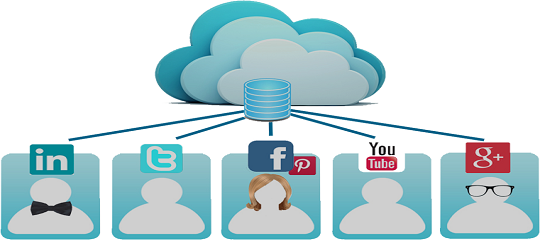Emergence of modern internet enabled communication devices such as smart phones backed by extensive penetration of internet connectivity has revolutionized delivery and distribution of video content to an ever growing and perpetually demanding consumer base.
Media and entertainment industry- new challenges
This evolution is marked by a significant shift from legacy platforms and broadcasting models towards digital dissemination via Internet across continuously expanding connected devices.
No wonder, the established broadcasters are facing overwhelming disruptions triggered by the fundamental shift, paving way for accessing scalable, cost efficient, flexible, and agile models of cloud computing.
In order to effectively handle these disruptive forces, it is essential for established broadcasters to espouse fresh approach to technology while steering a radical shift away from the traditional systems and accepting new approaches in culture as well as skill sets.
This will definitely empower them to acquire a competitive edge over new and more responsive over the top (OTT) candidates.
In terms of disruptive forces that are impacting established providers of broadcasts we can observe three major factors that are responsible for enhanced cloud adoption in view of greater flexibility as well as scalability.
Consumer segmentation- There has been a remarkable growth in consumer choices leading to unprecedented rise in demand for higher compute power and other resources in contrast to conventional broadcasting. Secondly, exponential increase in number of devices as well as channels has also underlined the need for more flexible systems and dynamic business models to efficiently cater to demanding and segmented consumers.
Need for faster application development- Growth in demand has put more pressures on development teams for newer and more offerings as faster pace. Consumer expectations for rapidly evolving and expanding choices of content experiences are growing exponentially. This has resulted in ever growing stress to accelerate development of solutions for keeping pace with rollout cycle.
Cost pressures of new technologies- Cost associated pressures are being felt in the sectors of operations, technology, and sourcing methods. Strain on traditional technologies, escalating prices of content rights and continuous pressure from more dynamic, low cost, and flexible competitors has forced companies to optimize costs and bring down technology investments.
Impact of OTT on established players
New over the top (OTT) competitors are far more agile and flexible as compared to the incumbent players in the domain of video distribution. These software based competitors are forcing established players to either keep pace with technology transformation and respond quickly by adopting new technologies or face the prospects of phasing out.
Potential benefits of cloud solutions
Established broadcasters need to adopt cloud solutions in order to remain competitive and keep pace with industry developments. Following obvious advantages of cloud computing can help them succeed in this endeavor:
- Match the pace of application development of new OTT entrants and improve time to market new offerings.
- Achieve dynamic scalability for handling spikes in demand for new offerings and sudden rise in workloads including streaming of live events.
- Proactively respond to demands of customer fragmentation, enhanced customer experiences, and one to one customer engagement by improving ability to conduct, store and collect analytics on extremely large volumes of data.
- Adopt agile and responsive development to accelerate pace of ongoing service improvement.
Improve agility by continuous experimentation that accommodates failure without significantly impacting bottom-line.
Analysis of influence of cloud adoption
Cloud solutions are poised to improve development of different aspects of video delivery industry in near future. Prevalence of cloud computing in this segment is a foregone conclusion and we will witness its adoption in wide spectrum of video delivery models. Following are some of the future developments that can be solely attributed to cloud adoption in this sector.
Cloud computing will significantly contribute to development of consumer cloud solutions. It is predicted that delivery of content rich offerings to different devices will be influenced by cloud as a major enabler of such services, which may be financed either by subscriptions or sponsorships.
Cloud is set to strengthen delivery of video content such as catch-up solutions. The ever incasing adoption of public cloud in video distribution is going to underpin catch-up services by directly relaying meta-data from cloud as and when client requests a portion of content related to a specific date.
Cloud will be instrumental in accomplishment of a positive business paradigm marked by tapeless and digital end to end workflow from production to the stage of delivery.
Live video coverage will be easily accessible by masses due to democratization of these services owing to cloud solutions. These services have already assumed a social as well as global perspective.
Distribution of video will not be an industry by itself anymore. Rather it will transform to become a function and will be adopted across different verticals of industries. Cloud adoption for delivering video to large population of audience marks a major shift that is triggered by emergence of mobile technology and changing consumer preferences.
Interesting Topic:
What Is The Scope Of Cloud Computing In India?
Can Anyone Tell Me Different Models Of Cloud Computing?






 Live Chat
Live Chat